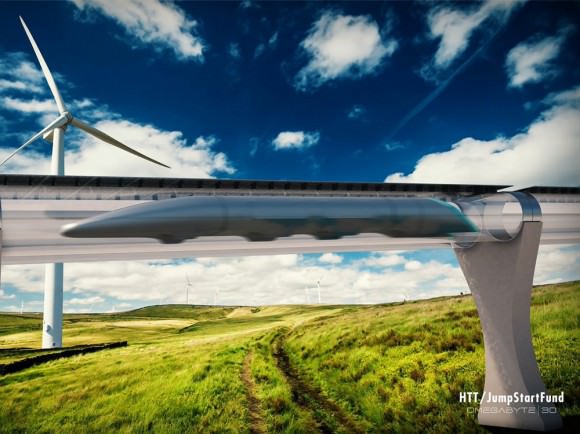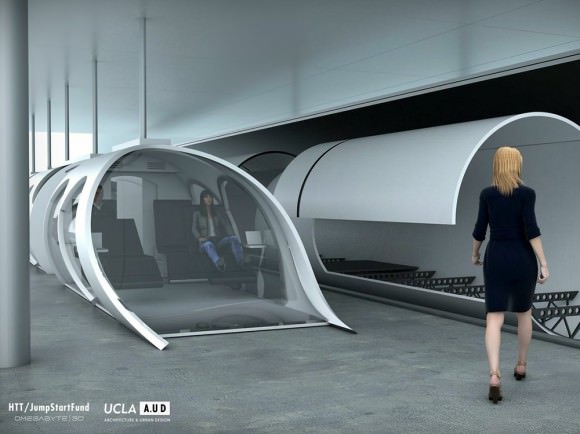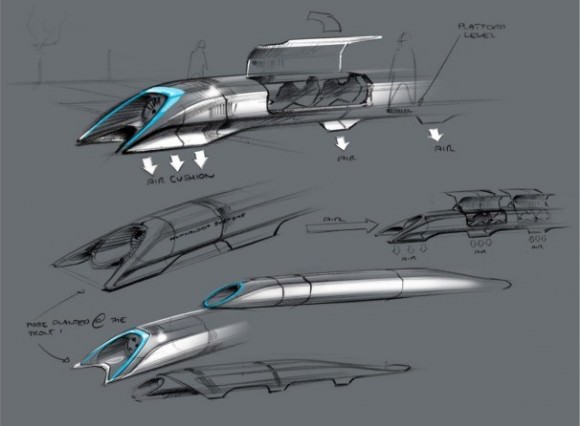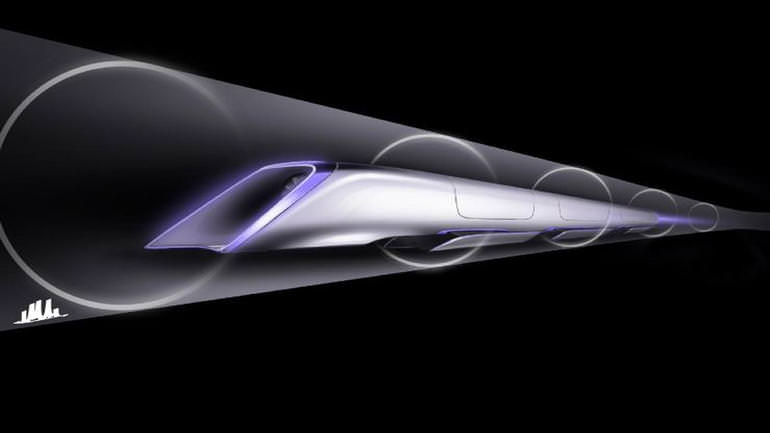Fans of Elon Musk and high-speed transit are sure to remember the Hyperloop. Back in 2013, Musk dropped the idea into the public mind with a paper that claimed that using the right technology, a high-speed train could make the trip from San Fransisco to Los Angeles in just 35 minutes.
However, Musk also indicated that he was too busy to build such a system, but that others were free to take a crack at it. And it seems that a small startup from El Segundo, California is prepared to do just that.
That company is JumpStartFund, a startup that combines elements of crowdfunding and crowd-sourcing to make innovation happen. Dirk Ahlborn, the CEO of JumpStartFund, believes they can build Musk’s vision of a solar-powered transit system that would transport people at up to speeds of 1280 km/h (800 mph).
Together with SpaceX, JumpStartFund has created a subsidiary called Hyperloop Transportation Technologies (HTT), Inc. to oversee all the necessary components to creating the system. This included bringing together 100 engineers from all over the country who work for such giants of industry as Boeing, NASA, Yahoo!, Airbus, SpaceX, and Salesforce.

Last week, these engineers came together for the first time to get the ball rolling, and what they came up with a 76-page report (entitled “Crowdstorm”) that spelled out exactly how they planned to proceed. By their own estimates, they believe they can complete the Hyperloop in just 10 years, and at a cost of $16 billion.
A price tag like that would be sure to scare most developers away. However, Ahlborn is undeterred and believes that all obstacles, financial or otherwise, can be overcome. As he professed in an interview with Wired this week: “I have almost no doubt that once we are finished, once we know how we are going to build and it makes economical sense, that we will get the funds.”
The HTT report also covered the basic design and engineering principles that would go into the building of the train, as Musk originally proposed it. Basically, this consists of pods cars that provide their own electricity through solar power, and which are accelerated through a combination of linear induction motors and low air pressure.
Much has been made of this latter aspect of the idea, and has often compared to the kinds of pneumatic tubes that used to send messages around office buildings in the mid-20th century. But of course, what is called for with the Hyperloop is bit more sophisticated.

Basically, the Hyperloop will operate by providing each capsule with a soft air cushion to float on, avoiding direct contact with rails or the tube, while electromagnetic induction is used to speed up or slow the capsules down, depending on where they are in the transit system.
However, the HTT engineers indicated that such a system need not be limited to California. As it says in the report: “While it would of course be fantastic to have a Hyperloop between LA and SF as originally proposed, those aren’t the only two cities in the US and all over the world that would seriously benefit from the Hyperloop. Beyond the dramatic increase in speed and decrease in pollution, one of the key advantages the Hyperloop offers over existing designs for high-speed rail is the cost of construction and operations.”
The report also indicated the kind of price bracket they would be hoping to achieve. As it stands, HTT’s goal is “to keep the ticket price between LA and SF in the $20-$30 range,” with double that amount for return tickets. But with an overall price tag of $16 billion, the report also makes allowances for going higher: “[Our] current projected cost is closer to $16 billion,” they claim, “implying a need for a higher ticket price, unless the loop transports significantly more than 7.4 million annually, or the timeline for repayment is extended.”
In addition, the report also indicates that they are still relying heavily on Musk’s alpha document for much of their cost assessment. As a result, they can’t be specific on pricing or what kinds of revenues the Hyperloop can be expected to generate once its up and running.

Also, there’s still plenty of logistical issues that need to be worked out, not to mention the hurdles of zoning, local politics and environmental assessments. Basically, HTT can look forward to countless challenges before they even begin to break ground. And since they are depending on crowdfunding to raise the necessary funds, it is not even certain whether or not they will be able to meet the burden of paying for it.
However, both Ahlborn and the HTT engineering team remain optimistic. Ahlborn believes the financial hurdles will be overcome, and if there was one thing that came through in the team’s report, it was the belief that something like the Hyperloop needs to happen in the near future. As the team wrote in the opening section of “Crowdstorm”:
“It quickly becomes apparent just how dramatically the Hyperloop could change transportation, road congestion and minimize the carbon footprint globally. Even without naming any specific cities, it’s apparent that the Hyperloop would greatly increase the range of options available to those who want to continue working where they do, but don’t wish to live in the same city, or who want to live further away without an unrealistic commute time; solving some of the major housing issues some metropolitan areas are struggling with.”
Only time will tell if the Hyperloop will become the “fifth mode of transportation” (as Musk referred to it initially) or just a pipe-dream. But when it was first proposed, it was clear that what the Hyperloop really needed was someone who believed in it and enough money to get it off the ground. As of now, it has the former. One can only hope the rest works itself out with time.
Further Reading: JumpStartFund, SpaceX/Hyperloop, Crowdstorm

